 February 9, 2023 John E. Ross, KD8IDJ, Editor
| ||||||
Amateur Radio Active in Turkey and Syria Following Earthquakes In the days following the 7.8 magnitude earthquake and aftershocks that hit Turkey and Syria on February 6, 2023, emergency communications have been active with rescue and response efforts.
The designated primary disaster communication frequency is 28.540 MHz (USB). In addition, 3.777 and 7.092 MHz will also be used as needed. Amateur radio operators have been asked to avoid these frequencies to allow any emergency traffic. In a statement issued to ARRL on February 9, 2023, IARU Region 1 Emergency Communications Co-Ordinator Greg Mossop, G0DUB, said the full effects of this disaster continue to unfold along with the search for any remaining trapped people. Here is his full statement: "Aziz, TA1E, is now at the disaster area and coordinating frequencies for teams carrying out search operations. Many countries have sent Search and Rescue [(SAR)] resources but the only ones known to have [r]adio [a]mateurs embedded in them are Georgia and Bosnia [and] Herzegovina. The Romanian SAR team has no operators, but [it] does have communications equipment supplied by RVSU, one of the Amateur Radio emergency groups in Romania. Aziz reported yesterday that 'due to the overwhelming dimension of the incident, some problems in coordination occur[ed]. These naturally have an impact [o]n the coordination of the incoming foreign As the assignment of their duty area is sometimes [a] 'last-minute decision,' and this decision is made by government officials, I would kindly ask the groups to report to me [for] that assignment. I will then [be] able to inform the groups [of] the usable frequencies in the area.' With the large number of rescue teams deployed to the country, the challenges in coordinating teams, locations, and frequencies are to be expected. With the death toll now over 17,000 in Turkey and Syria, the focus remains [on] getting the right help to the right place. A clear message from Aziz, when asked whether any radio operators or equipment were required, was: 'Assistance of individual radio amateurs is only possible if they are 'embedded' to SAR Teams with [International Search and Rescue Advisory Group] (INSARAG) Certification, which [has] been accredited by the Turkish government.' At the time of the earthquake, a [European Conference of Postal and Telecommunications Administrations] (CEPT) meeting was taking place, and it has been reported that the Turkish delegation to that meeting confirmed that Radio Amateurs were being deployed in the emergency response. Traffic is being heard on 10 and 80 meters in the Turkish language, so the request to keep frequencies in the area clear remains. The majority of emergency communications traffic remains on VHF. The earthquake affected Syria as well. I have tried reaching the Syrian [Scientific Technical Amateur Radio] Society but with no response, as they seem to have gone QRT. [The] full effects of this disaster continue to unfold and [are] now encompassing the needs of survivors [to]search for any remaining trapped people." To date, there have been more than 17,000 casualties in Turkey and Syria combined, and more than 14,000 casualties in Turkey alone, with more than 63,000 people reported injured. Aftershocks continue and relief organizations are on site, with more aid arriving in the areas daily. Additional and updated information is available at https://www.iaru-r1.org/2023/turkiye-earthquake-6-february-2023/ Bouvet Island DXpedition is On the Air! The 3Y0J team has arrived and begun operations on Bouvet Island. The conditions have been difficult and the team is not yet operating at full capacity.
The 3Y0J Media Officer and East Coast Pilot, Steve Hass, N2AJ, wrote on Facebook that, as of Wednesday, February 8, 2023, the team has only enough power to operate two radios simultaneously. A storm is forecasted to bring high winds to the remote island, so the team is taking precautions. Some of the antennas may be taken down to prevent damage. According to Facebook posts, the yacht that brought the team to the island, the S/V Marama, has been moved farther offshore in anticipation of the winds. Despite the challenges, the DXpeditioners say they logged 5,000 QSOs in the first 48 hours of operation. To date, the team has been heard working CW on 17 meters and SSB on 15 meters. No matter the mode, the operators will always be listening up. That means hams should listen for them on their frequency and transmit back to them 5 - 10 kHz above that frequency. The operator will be tuning back and forth to try and pull out the strongest station.
The Bouvet operators intend to work FT8 to give modest stations a chance to log the rare entity. They will always be working in Fox and Hound mode. The team asks operators who have already worked the island on one band or mode to not attempt another contact. The hope is that every station trying to make contact will be able to add Bouvet to their log. The 3Y0J DXpedition is one of the most anticipated activations in recent years. Bouvet Island is ranked second on Club Log's DXCC Most Wanted List, right behind P5/North Korea. Amateur Radio Events Celebrate the Universe Two amateur radio events are scheduled in mid-February to celebrate an astronomer who mapped the universe and an astronomer who discovered a planet.
The Northern Arizona DX Association (NADXA) has been conducting a 10-year special event countdown to the 100-year anniversary of Pluto's discovery. The planet was spotted in 1930 by Clyde Tombaugh at the Lowell Observatory in Flagstaff, Arizona. This is the third year of the special event, which will run from February 11 - 19, 2023. NADXA club members will operate from the Lowell Observatory and their own stations. They will be using the call sign W7P on most bands and modes, beginning February 11 at 00:00 UTC through February 20 at 00:00 UTC. Also operating will be W7P/0 from Kansas City, Missouri. The W7P/0 station is managed by the nephew of Clyde Tombaugh, Doug Tombaugh, N3PDT. Last year's event resulted in more than 7,000 QSOs, 58 DX entities, and 17,000 lookups on https://www.qrz.com/. In Poland, from February 17 - March 5, 2023, the Polish Amateur Radio Union (PZK) will operate nine special event stations honoring the 550th anniversary of the birth of Nicolaus Copernicus. Copernicus mapped the universe and formulated a model that placed the sun, rather than Earth, at its center. The nine special event stations will operate from February 17 at 00:00 UTC to March 5 at 23:59 UTC, using the following call signs: SN550K, SN550O, SN550P, SN550E, SN550R, SN550N, SN550I, SP550K, and SN550NC. Registration Open for the 2023 QSO Today Virtual Ham Expo
The event is a fully interactive virtual ham radio convention offering new content, networking opportunities, and more than 50 amateur radio presentations on a wide variety of subjects. There is still time to participate in the event as a presenter. You can submit an application to present a video on a topic of your choice. The deadline for submission is February 15, 2023. Tickets are $15, and registration information can be found at the QSO Today Virtual Ham Expo website. -- ARRL is a QSO Today Expo Partner. Utah Students Talk to an Astronaut on the International Space Station Amateur Radio on the International Space Station (ARISS) was active on February 7, 2023, with a downlink to students in the Cache County School District in Millville, Utah.
Astronomy students from Ridgeline and Sky View high schools were able to talk to Astronaut Josh Cassada, KI5CRH, with the help of the Bridgerland Amateur Radio Club (BARC), an ARRL Affiliated Club. Ten students were able to ask questions that ranged from how fast you're able to spin in a weightless environment, to which NASA project Astronaut Cassada thinks is most important to us as human beings. A YouTube video of the entire event, including Astronaut Cassada's answers, is available. ARISS is a cooperative venture of international amateur radio societies and the space agencies that support the ISS. In the US, participating organizations include NASA's Space Communications and Navigation program (SCaN), the ISS National Laboratory's Space Station Explorers program, ARRL The National Association for Amateur Radio®, and AMSAT. Amateur Radio in the News ARRL Public Information Officers, Coordinators, and many other member-volunteers help keep amateur radio and ARRL in the news. "Local HAMS celebrate Kansas Day" / The Gardner News (Kansas), January 31, 2023. -- The Santa Fe Trail ARC is an ARRL Affiliated Club. "Dixie Amateur Radio Club makes widespread contact during annual field day" / Cedar City News (Utah), February 2, 2023. -- The Dixie Amateur Radio Club is an ARRL Affiliated Club. "Helping through ham radio: Emergency services use amateur radio specialists" / East Oregonian (Oregon), February 6, 2023. -- Amateur Radio Emergency Services®. "Local Amateur Radio System Expands In Calvert County" / The BAYNET (Maryland), February 6, 2023 -- The Calvert Amateur Radio Association is an ARRL Affiliated Club. "Helping through ham: Emergency services enlist amateur radio specialists" / The Columbian (Oregon) February 7, 2023 -- Umpqua Valley Amateur Radio Club. Share any amateur radio media hits you spot with us. ARRL Podcasts On the Air ARRL Audio News The On the Air podcast is available on iTunes (iOS) and Stitcher (Android). The On the Air podcast and ARRL Audio News are also on blubrry -- On the Air | ARRL Audio News. In Brief... A Barbados amateur radio operator, thought to be among the world's oldest operators, has died. Winston "Woody" A. Richardson, 8P6CC, died on February 1, 2023. He was 108 years old. Richardson was born on the island of St. Lucia and was first licensed as VP6WR, before Barbados achieved its independence from the United Kingdom. "I first met him in September 1967, and we were lifelong friends," said Jim Neiger, N6TJ. "He had a modest station at Upton Terrace, in the suburbs of Bridgetown, [Barbados], and was formerly the Superintendent of the Barbados Water Authority." Richardson hosted Neiger's 8P6J contest operations, which included a number two spot in the 1980 ARRL DX CW Test, and several top-five spots in the CQ World Wide DX CW contests from 1980 to 1982. The Woody Richardson Communications Room at the Amateur Radio Society of Barbados is named after him. Richardson visited the headquarters of the Amateur Radio Society of Barbados in 2020. The K7RA Solar Update Tad Cook, K7RA, of Seattle, Washington, reports for this week's ARRL Propagation Bulletin:
For this week's ARRL Propagation Bulletin ARLP006: A period of rising solar activity returned this week. Ten new sunspot groups appeared this reporting week, February 2 - 8, 2023: two on February 3, one each on February 4 - 5, four more on February 6, and two more on February 8. Early on February 9, Spaceweather.com reported a large emerging sunspot over the sun's southeast horizon. The average daily sunspot number for this week rose from 80.7 to 95.1, and the average daily solar flux from 139.5 to 155.9. Geomagnetic indicators rose as well. The planetary A index rose from 7.9 to 11.7, and the middle latitude numbers rose from 5.9 to 7.6. The rise in geomagnetic activity was related to solar wind late in the reporting week. Predicted solar flux is 192 on February 9; 195 on February 10 - 13; 190 on February 14 - 15; 170 on February 16; 150 on February 17 - 18; 145, 140, 135, 130, and 135 on February 19 - 23; 130 on February 24 - 26; 125 on February 27; 130 on February 28 - March 3; 135, 150, and 160 on March 4 - 6; 155 on March 7 - 8; 160 on March 9, and 155 on March 10 - 12. Predicted planetary A index is 12 on February 9 - 10; 5, 5, and 8 on February 11 - 13; 5 on February 14 - 17; 8 on February 18 - 19; 5 on February 20 - 21; 10 on February 22 - 24; 5, 5, and 8 on February 25 - 27; 5, 5, and 8 on February 28 - March 2; 5, 5, and 10 on March 3 - 5; 15, 15, 12, and 8 on March 6 - 9, and 5 on March 10 - 16. Tamitha Skov's latest, from February 5: Sunspot numbers for February 2 through 8 were 56, 74, 66, 79, 139, 110, and 142, with a mean of 95.1. The 10.7-centimeter flux was 134.9, 134.5, 139, 144, 156.7, 184.7, and 197.6, with a mean of 155.9. Estimated planetary A indices were 6, 9, 6, 5, 18, 20, and 18, with a mean of 11.7. Middle latitude A index was 2, 6, 5, 3, 13, 12, and 12, with a mean of 7.6. 73, K7RA Send your tips, questions, or comments to k7ra@arrl.net. A comprehensive K7RA Solar Update is posted Fridays on the ARRL website. For more information concerning radio propagation, visit the ARRL Technical Information Service, read "What the Numbers Mean..." and check out the Propagation Page of Carl Luetzelschwab, K9LA. A propagation bulletin archive is available. For customizable propagation charts, visit the VOACAP Online for Ham Radio website. Share your reports and observations. A weekly, full report is posted on ARRL News. Just Ahead in Radiosport Year-long -- ARRL Volunteers On the Air (VOTA). See also the State Activations Schedule for weekly W1AW Portable Operations including these:
Upcoming Contests:
Visit the ARRL Contest Calendar for more events and information. Upcoming Section, State, and Division Conventions
Search the ARRL Hamfest and Convention Database to find events in your area. Have News for ARRL? Submissions for the ARRL Letter and ARRL News can be sent to news@arrl.org. -- John E. Ross, KD8IDJ, ARRL News Editor
ARRL -- Your One-Stop Resource for
Subscribe to...
Free of charge to ARRL members...
| ||||||
-2023.jpg) The emergency communications group Türkiye Radyo Amatörleri Cemiyeti (TRAC) is coordinating primary communications.
The emergency communications group Türkiye Radyo Amatörleri Cemiyeti (TRAC) is coordinating primary communications.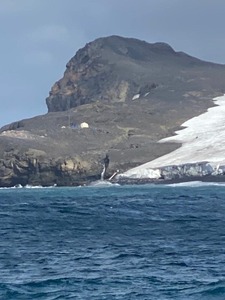
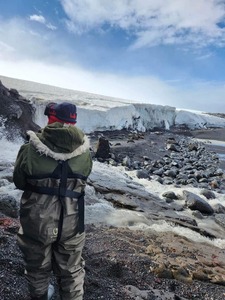
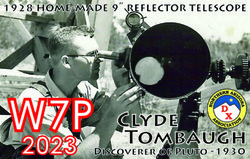
 The 2023 QSO Today Virtual Ham Expo will be held on March 25 - 26, and registration is now open.
The 2023 QSO Today Virtual Ham Expo will be held on March 25 - 26, and registration is now open.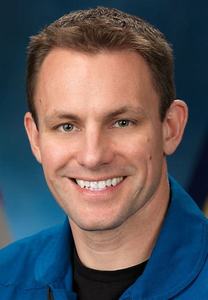
.jpg)
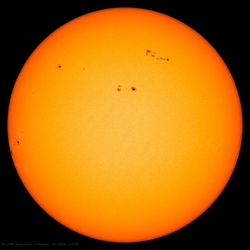
-2023.jpg) February 15 - 21 -- Wisconsin, W1AW/9
February 15 - 21 -- Wisconsin, W1AW/9-Blue.jpg)








